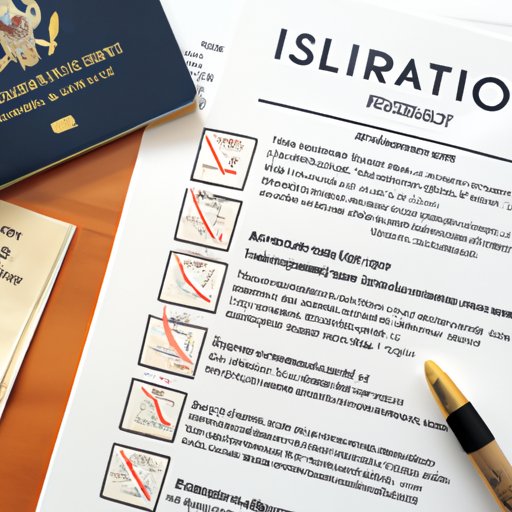
How to Apply for Citizenship in the USA: A Step-by-Step Guide
Obtaining citizenship in the USA is a dream come true for many immigrants. Citizenship allows people to enjoy various benefits such as the right to vote, the ability to sponsor family members to come to the US, and the opportunity to work for the federal government. However, the citizenship application process can be daunting for many. In this article, we will provide a comprehensive guide on how to apply for citizenship in the USA, including step-by-step instructions, personal experiences, common mistakes, pros and cons, and historical perspectives.
Step-by-Step Guide
Basic Requirements
Before applying for citizenship, there are essential requirements to meet. Firstly, you must be a legal permanent resident of the USA for at least five years, or three years if you are married to a US citizen. Secondly, you must be at least 18 years old, and thirdly, you must have good moral character. Additionally, you must be proficient in reading, writing, and speaking English and have basic knowledge of US history and government.
How to Apply for Citizenship
The citizenship application process involves various steps, as outlined below:
Filling out the N-400 Form
Start by filling out the N-400 form, also known as the Application for Naturalization. The form can be downloaded from the USCIS website or requested by phone or mail. Answer all questions truthfully and fully, and ensure that you sign and date the form.
Submitting Relevant Documents
Supporting documents will need to be submitted with your N-400 form. These include proof of residency, tax returns, employment history, travel history, and any criminal records. The list of required documents can be found on the USCIS website or in the N-400 form instructions. Make sure that you submit copies of original documents unless otherwise specified.
Scheduling an Interview and Taking the Necessary Tests
Once your application is submitted, USCIS will review it and schedule an interview. You will be required to attend a biometrics appointment to provide fingerprints, photograph, and signature. During the interview, you will be required to take a US history and government test and demonstrate your English proficiency. You will also be asked questions about your application and personal history.
Receiving a Decision on Your Application
After the interview, you will receive a decision on your application. If approved, you will be invited to a naturalization ceremony where you will take the Oath of Allegiance to the United States.
Personal Stories
The citizenship process can be a long and emotional journey for many. Hearing personal experiences and anecdotes can provide insight and support for those going through the process.
For instance, Brenda, a mother of three, shared her story of applying for citizenship after living in the USA for ten years. She was initially nervous about her English proficiency and the test but found comfort in practicing with her family and friends. She also found strength in focusing on her desire to contribute to her community and her family’s legacy in the USA.
Common Mistakes
There are some common mistakes that applicants make during the citizenship application process. It’s important to avoid these mistakes to ensure a smooth process and decrease the likelihood of delays or even denial of an application.
Some of the common mistakes applicants make include failing to disclose criminal records, submitting incomplete or incorrect forms, failing to attend scheduled appointments, and missing deadlines for submitting relevant documents.
Pros and Cons
Obtaining citizenship in the USA has many advantages, such as the right to vote, work for the federal government, sponsor family members, and obtain certain public benefits such as social security and Medicare. However, the citizenship process can also have disadvantages, such as lengthy wait times and fees, stress and anxiety related to tests and interviews, and the potential for being denied.
Historical Perspective
Citizenship in the USA has evolved over time, reflecting the country’s changing political and societal landscape. For instance, the 14th Amendment to the US Constitution, ratified in 1868, granted citizenship to individuals born in the USA, regardless of race or ethnicity. Over time, citizenship laws have expanded to include various pathways, such as through marriage to a US citizen or refugee status.
Conclusion
In conclusion, applying for citizenship in the USA is a significant step for many immigrants. The process can be overwhelming, but with careful preparation, an understanding of the basic requirements, and awareness of common mistakes, you can successfully apply for citizenship. Moreover, by seeking personal stories, understanding the pros and cons of obtaining citizenship, and learning about its historical perspectives, one can appreciate the significance of citizenship in the USA.




